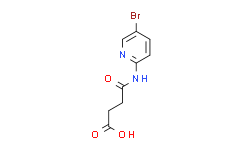Bikinin reduces transcript levels of NbRBOHB and BR-induced NbRBOHB expression in TRV:00, TRV:NbDWARF, TRV:NbBRI1, TRV:NbBSK1, TRV:NbBAK1, TRV:NbBIK1 and TRV:NbBSU1 plants. Bikinin largely inhibits BR-increased ROS accumulation. Moreover, Bikinin decreases the transcripts of these six genes in all plants, but fails to down-regulate transcripts of these genes in NbBES1/BZR1-silenced plants. Bikinin also inhabits BR-induced up-regulation of the six genes, and the inhibition effects are compromised in NbBES1/BZR1-silenced plants. Bikinin is a potent inhibitor of group I and group II ASKs. Bikinin directly binds the GSK3 BIN2 and acts as an ATP competitor. Furthermore, bikinin inhibits the activity of six other Arabidopsis GSK3s.
Medlife has not independently confirmed the accuracy of these methods. They are for reference only.



 扫码关注公众号
扫码关注公众号